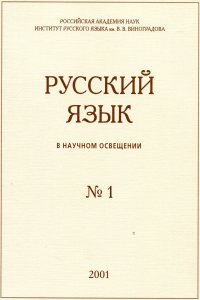Речевые стратегии выражения эмоций в русском языке
Abstract:
The paper suggests a hierarchy of 14 clusters of Russian emotions with respect to their linguistic acceptability. The following clusters are considered: ‘joy’, ‘sadness’, ‘anger’, ‘pity’, ‘shame’, ‘pride’, ‘surprise’, ‘fear’, ‘resentment’, ‘disgust’, ‘gratitude’, ‘jealousy’, ‘envy’, ‘contempt’, with up to ten subtypes of emotion in each cluster (e.g., pity, sympathy, compassion, sorry, to pity, to sympathize for the ‘pity’ cluster). The level of linguistic acceptability of emotions is determined by means of a corpus study, on the basis of emotion words usage in various types of test constructions which elicit the degree to which the speaker is ready to acknowledge experiencing one or another emotion. This research demonstrates that the most acceptable Russian emotion is ‘gratitude’, whereas the least acceptable is ‘disgust’; ‘joy’ is also a highly acceptable emotion, along with another positive emotion, ‘pride’, though the latter had only recently ascended from the lower parts of the hierarchy. The less acceptable emotions include those which occur as a result of one’s own bad actions (‘shame’) or somebody else’s (‘anger’, ‘resentment’). In the course of research, certain connections have been established between the type of emotion and its preferred means of linguistic expression. In particular, it has been demonstrated that basic emotions are the likeliest to possess synthetic causatives in Russian (to gladden, to frighten, to anger, to sadden, to surprise).


